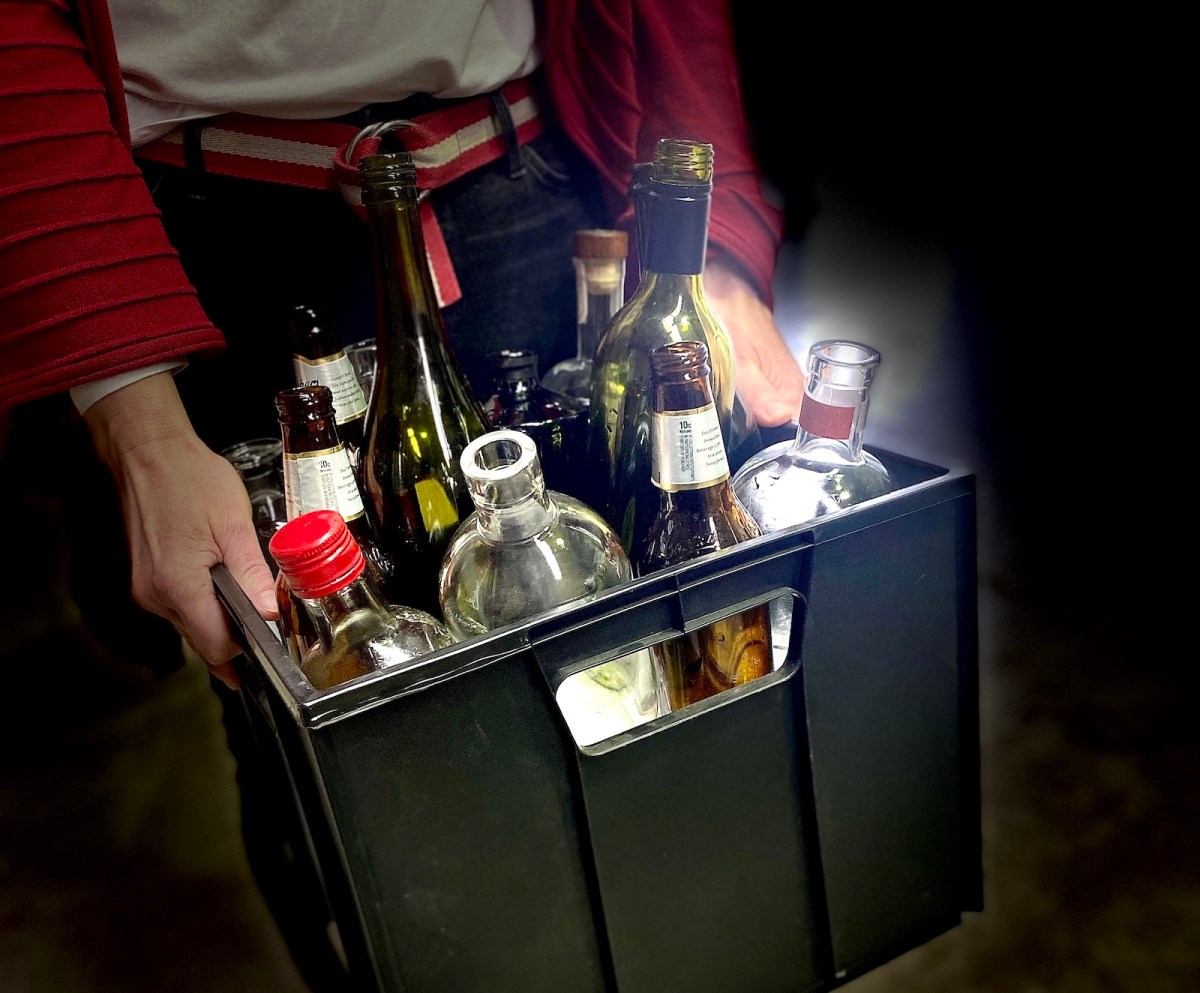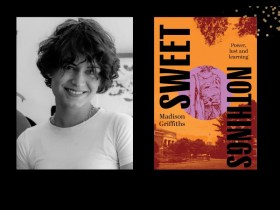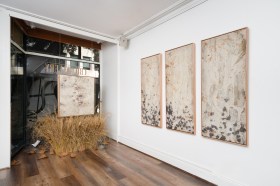Having a sustainable practice is a phrase that pops up more and more regularly today. While for some that may mean putting solar panels on their studio, not all artists have the income (or the studio) to make that investment for a better future.
ArtsHub spoke with a number of creatives about what they are doing, and their tips for easy hacks for a more environmentally sustainable practice.
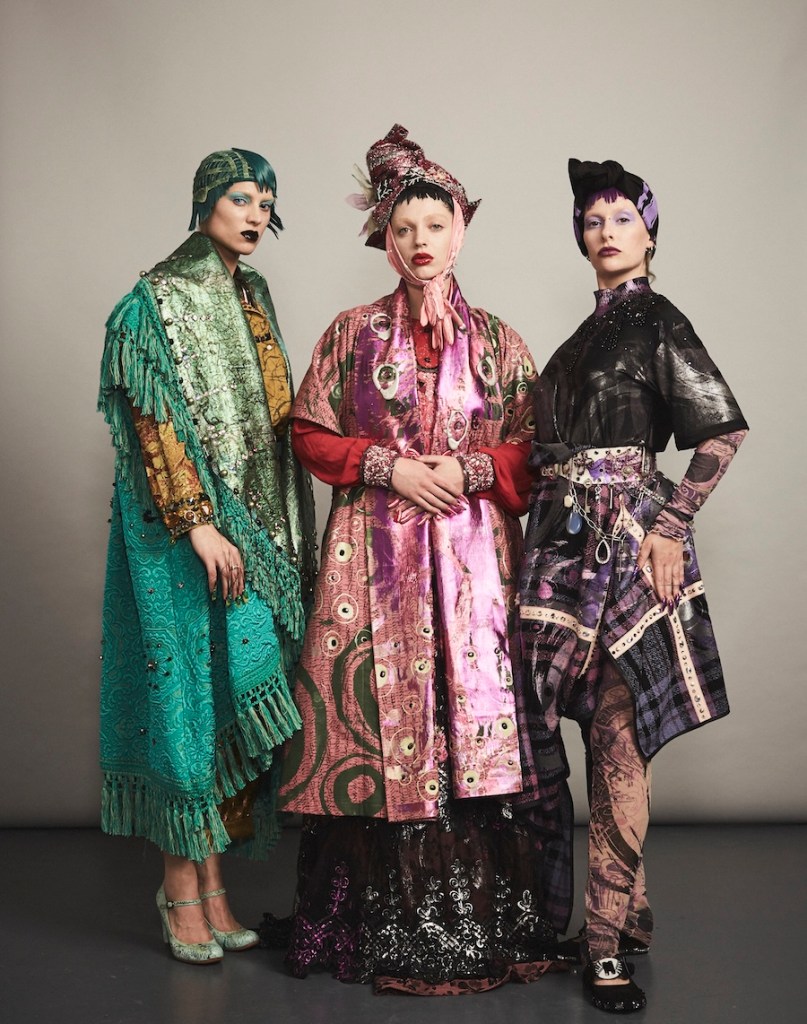
Sally Jackson, fashion designer
Fashion designer Sally Jackson says, ‘[My] passion lies in transforming pre-loved clothing and textile waste into unique, upcycled designs.’
She continues: ‘Natural fibres are my go-to, as they biodegrade more readily, minimising environmental impact. Polyester, nylon and acrylic – those plastic materials are generally more shiny and dramatic, but are firmly off my list as they are environmentally unfriendly.’
Jackson adds, ‘Collaboration is also key for me as a sustainable fashion activist. Sharing skills with fellow artists and designers and sourcing materials from community organisations like Reverse Garbage in Marrickville (Sydney) sparks creativity, reduces landfill waste and supports local businesses.’
Read: Just a buzz word? What sustainable fashion means today
Bastian Fox Phelan, zine maker
For Newcastle-based zine maker, Bastian Fox Phelan, ‘using what you already have is a fun and sustainable way to begin any arts project’. They continue: ‘It’s easy to trick yourself into thinking that you need to buy things, or that you need a particular tool or material that you don’t have, but creativity and consumerism are almost exact opposites.’
Fox Phelan says, ‘Zine making offers the opportunity to work with very basic materials: pens, paper, scissors, glue. I love cutting up old, unwanted picture books – check street libraries or free boxes outside secondhand books shops. Whenever you’re collaging or doing paper craft at home, save the offcuts and turn them into something else. It’s like the paper version of making vegetable stock from peels.’
They add, ‘Before I owned a long-arm stapler, I would open a regular stapler and staple the zine onto a pillow and then push the staples closed with my fingers. I don’t recommend that if you’re making 50 zines, but it is a reminder that you really don’t need much. Beginning is the scariest part of creativity, and that’s why we often procrastinate by going shopping. So just start anywhere, with anything you have.’
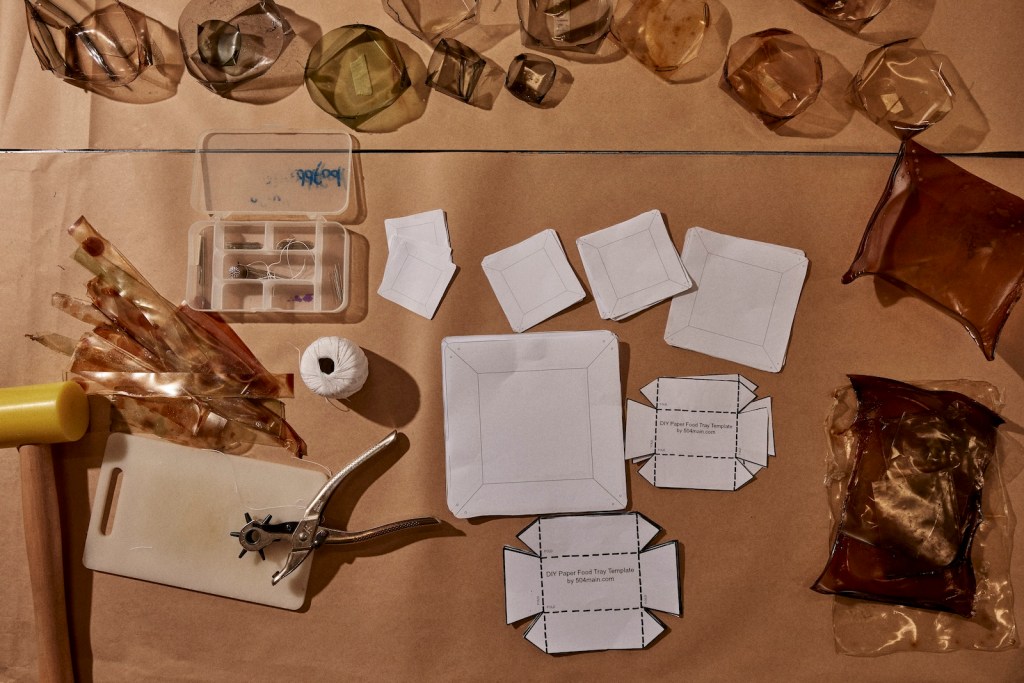
Birra-li Ward, arts educator
Ward says, ‘As educators, we have an opportunity to work with young people and encourage them to stay curious and find solutions. We have a role to help our students connect the local and the global issues surrounding sustainability. This can occur across all their learning as the world isn’t split into learning areas – through the choices of materials we use in our classrooms, but also harnessing that art and art-making can be a form of advocacy for the environment.
Ward reminds us to ask the questions and get them foremost into young minds: ‘What are the sustainability issues associated with the use of materials and the footprint on the environment? Is the outcome worth the consequence to the environment?’
Ben Quilty, painter
Ben Quilty has long run his studio off solar panels, but tells ArtsHub that he is now focused on ‘working out ways to travel. I don’t go to my openings nearly as much anymore, because I feel that with air travel that fossil fuel impact is huge’.
He adds, ‘A hundred years ago, no one travelled anywhere. And then we’ve accelerated to now just expecting that we travel. I think we’re going to have to go back, and that includes for us artists, and in our work. So it’s finding ways to make work that minimises freight. I’m looking at starting to take my works off stretchers. I can’t roll them, but I can pack them all in one thin box, rather than one massive crate for each painting. You’re taking up using massive amounts of fossil fuels to travel crates around the world. That’s something that’s being discussed right around the planet with contemporary artists.’
Quilty adds, ‘The other thing is, if you’re in a museum show, ask that the climate controls be relaxed. I do that. My works don’t need to be kept in museum quality standards – they’re not 500 years old. And I think museum practice is beginning to reflect that.’
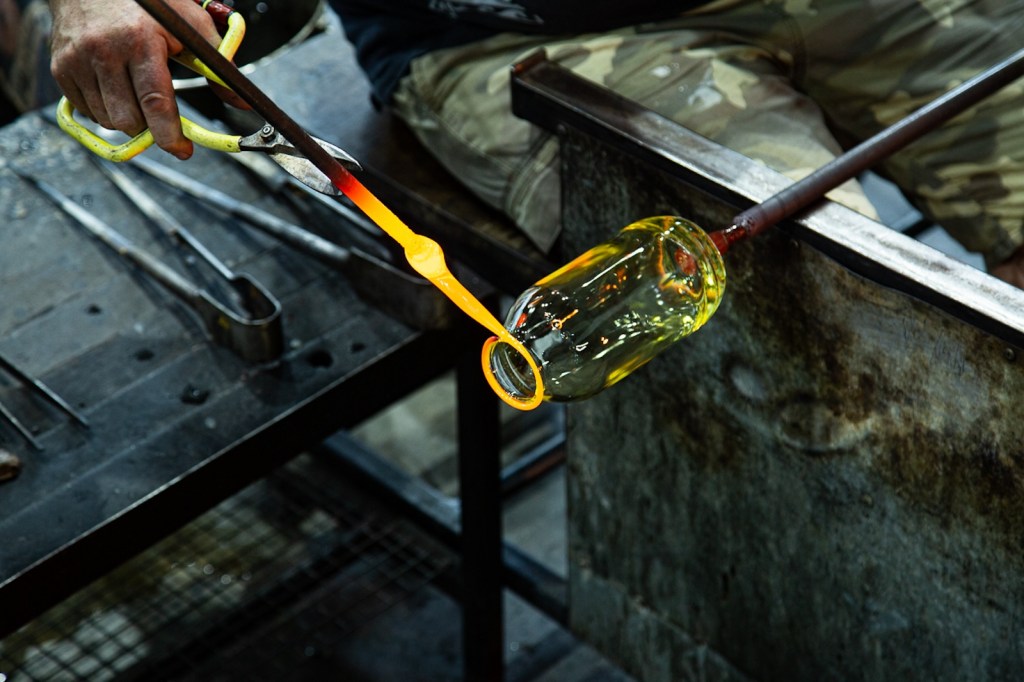
Scott Chaseling, Glass artist
Based in the Southern Highlands in regional NSW, Scott Chaseling says he ‘reads an “environmentally sustainable arts practice” not as a fashionable soundbite but as an ongoing way of living and working’.
Chaseling continues: ‘Glass blowing would have to be one of the least sustainable practices, due to the transportation of raw materials, and then cooking these in a large gas-fired furnace that can run 24/7 for five years. All that energy, and to be used only for eight hours a day per week! This is madness.
‘So I’ve moved to solar to power my kilns, and I’m not melting glass but, rather, I’m reshaping locally sourced wine bottles. I don’t consider it recycling or upcycling though – for me it is rescuing the bottles as a design source material.’
He adds, ‘My little gas-fired reheating furnace is only turned on for the time of making, and this could be one hour per week or 40 hours. That is a lot of saved energy and fossil fuels. It has changed the way I work, and I am even making exhibition pieces using the same studio set-up.’
Disclaimer: Scott Chaseling has his own artistic practice; however, the writer is a co-creative with Small Impact Studio.
Read: Greening the arts through collective action
Milena Stojanovska, Ngununggula regional gallery
Charged with managing exhibition installations at Ngununggula, Deputy Director Milena Stojanovska says, ‘As an art institution, we believe that it is our responsibility to lead by example in our community of the Southern Highlands, which was sadly devastated by the bushfires of 2019, and more broadly within the visual arts community. To this end, we have recently secured funds to install a significant solar array with batteries on our site. This will ensure that we can operate almost entirely off-grid, and the money saved will be available to spend on our Creative Program and supporting artists through new commissions.’
She continues, ‘We are aware that exhibition installs significantly contribute to landfill, and so we aim to use recycled packing materials whenever possible. Furthermore, we strive to design exhibition elements in a way that allows them to have a life beyond the exhibition. We take a modular approach wherever possible, so that plinths, seating, cabinets and building materials, in general, can be disassembled, adapted and reused time and time again. In the two and a half years of our operation, we have only made a trip to the tip twice!’
